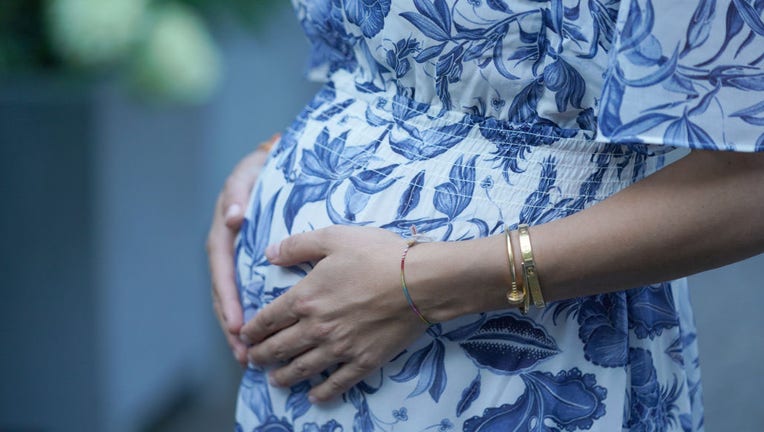Fewer US babies born in 2022 amid record-low birth rates for young moms

FILE - A pregnant woman cradles her baby bump in a file image. (Photo by Marcus Brandt/picture alliance via Getty Images)
U.S. births were flat last year, as the nation saw fewer babies born than it did before the pandemic, the Centers for Disease Control and Prevention reported Thursday.
Births to moms 35 and older continued to rise, with the highest rates in that age group since the 1960s. But those gains were offset by record-low birth rates to moms in their teens and early 20s, the CDC found. Its report is based on a review of more than 99% of birth certificates issued last year.
A little under 3.7 million babies were born in the U.S. last year, about 3,000 fewer than the year before. Because the numbers are provisional and the change was small, officials consider births to have been "kind of level from the previous year," said the CDC’s Brady Hamilton, the lead author of the report.
U.S. births were declining for more than a decade before COVID-19 hit, then dropped a whopping 4% from 2019 to 2020. They ticked up about 1% in 2021, an increase experts attributed to pregnancies that couples had put off amid the early days of the pandemic.
More findings from the report:
- The highest birth rates continue to be seen in women in their early 30s. The number of births for women that age was basically unchanged from the year before. Births were down slightly for women in their late 20s, who have the second-highest birth rate.
- Births to Hispanic moms rose 6% last year and surpassed 25% of the U.S. total. Births to white moms fell 3%, but still accounted for 50% of births. Births to Black moms fell 1%, and were 14% of the total.
- The cesarean section birth rate rose slightly, to 32.2% of births. That’s the highest it’s been since 2014. Some experts worry that C-sections are done more often than medically necessary.
- The U.S. was once among only a few developed countries with a fertility rate that ensured each generation had enough children to replace itself — about 2.1 kids per woman. But it’s been sliding, and in 2020 dropped to about 1.6, the lowest rate on record. It rose slightly in 2021, to nearly 1.7, and stayed there last year.
More complete and detailed 2022 numbers are expected later this year. That data should offer a better understanding of what happened in individual states and among different racial and ethnic groups, Hamilton said.
It also may show whether births were affected by the U.S. Supreme Court decision last June overturning Roe v. Wade, which allowed states to ban or restrict abortion. Experts estimate that nearly half of pregnancies are unintended, so limits to abortion access could affect the number of births.
If such restrictions are having an affect on births, it didn't show up in the national data released Thursday.
It's possible the abortion restrictions will lead to higher births rates in 2023 — more likely among younger women than older moms, said Ushma Upadhyay, a reproductive health researcher at the University of California, San Francisco. But even if there is a rise, it may not bring the nation back to pre-pandemic birth levels, given other trends, she added.
"I don't know if we'll ever get back there," she said.
RELATED: China records 1st population decline in decades as births drop

